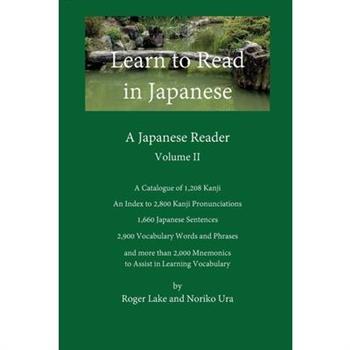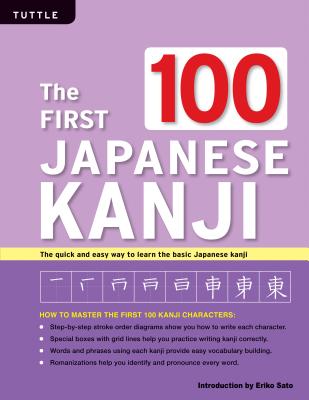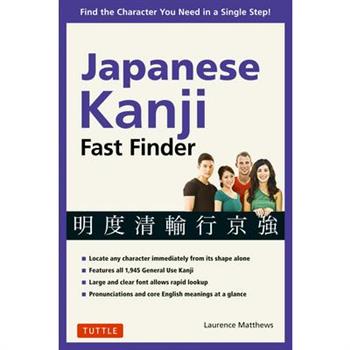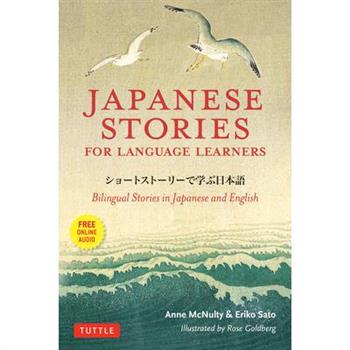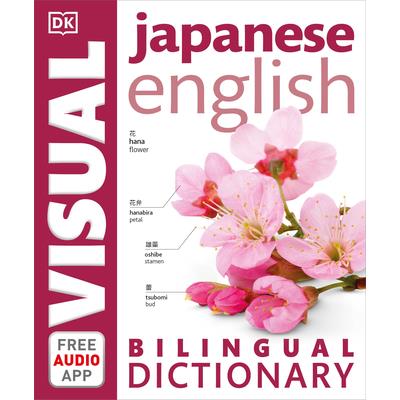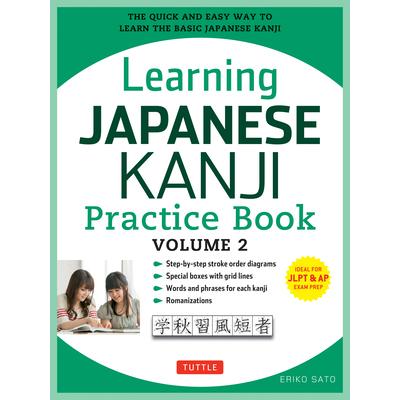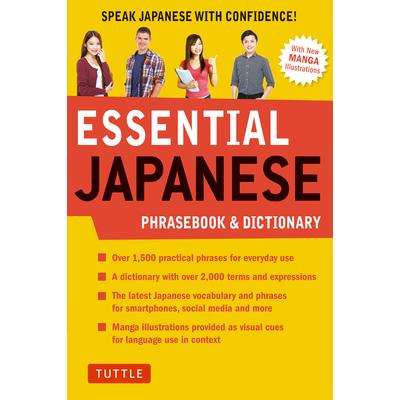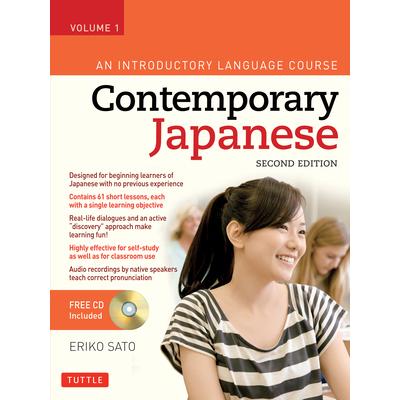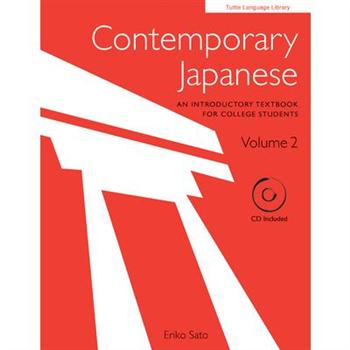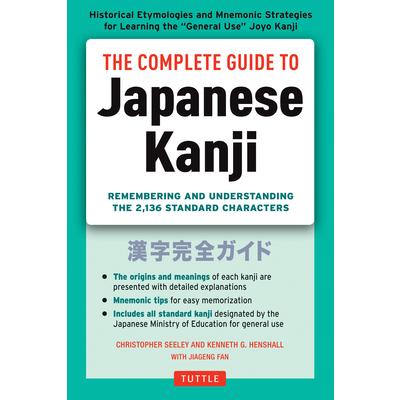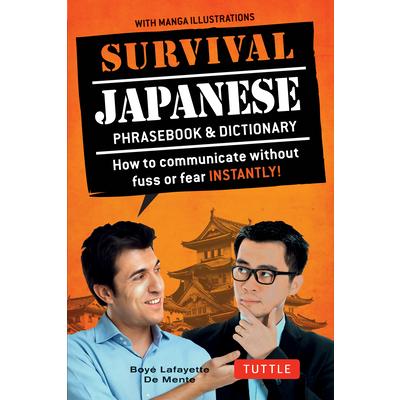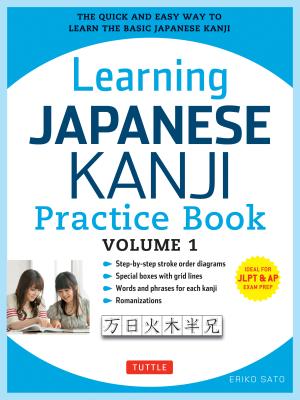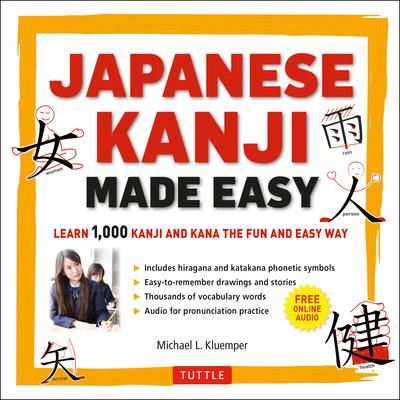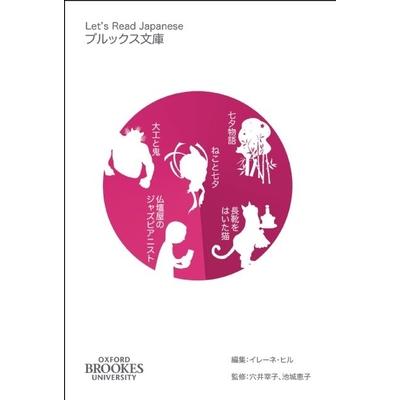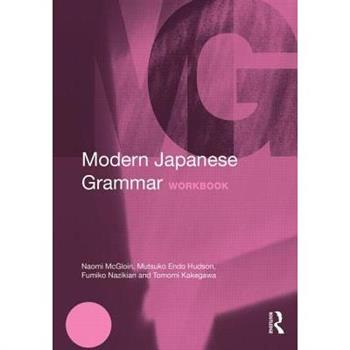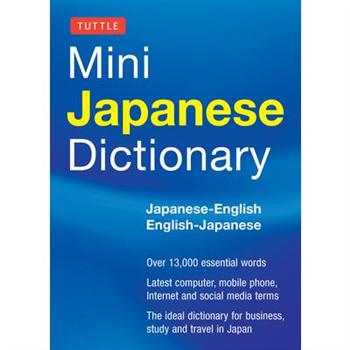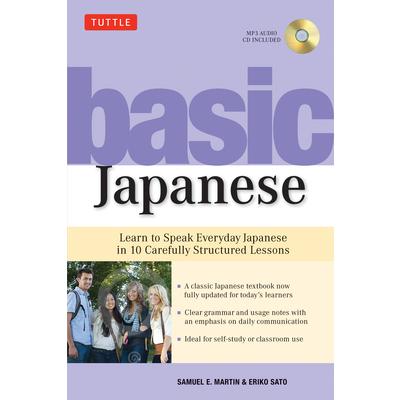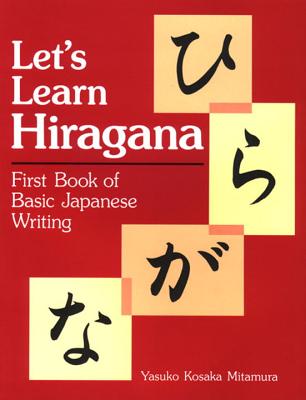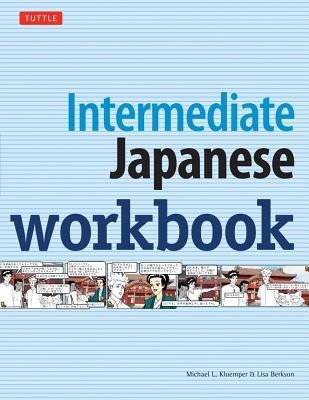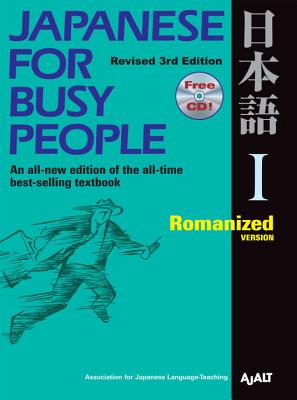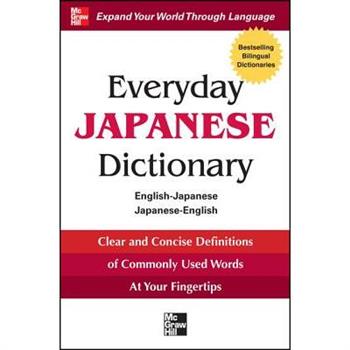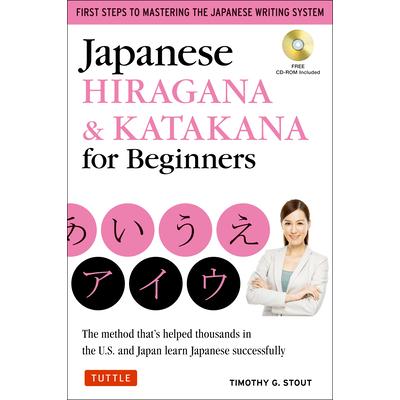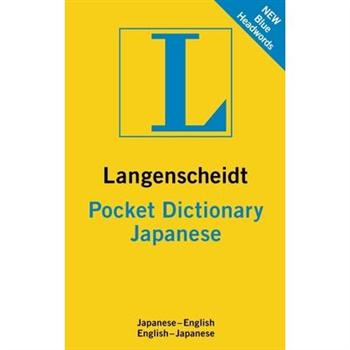Learn to Read in Japanese, Volume II
This book is based on our belief that the most enjoyable and efficient way to learn to read in Japanese is to dive in and start reading almost immediately, learning new kanji with the help of memory aides as you go.In order to make this approach workable, we introduce new kanji at the beginning of each chapter and then ask you to take a quick pre-test on their pronunciations before you start to read. The practice reading material in each lesson includes only kanji characters that you know or are in the process of learning, and we provide immediate feedback about your reading accuracy in the form of same-page romaji equivalents and translations. The book is designed for students who are at least somewhat familiar with the 608 kanji that were introduced in Learn to Read in Japanese, Volume I. It introduces 600 additional kanji, for a total of 1208. Like the first book, it includes at least three practice sentences for each new kanji, totaling about 1660 sentences. You will discover a few changes to the format of this book, compared to Volume I. First, we reduce the number of kanji that we introduce in each chapter from ten to eight. Second, we group the new kanji in the Kanji Catalogue by chapter, so that it is easy to study them in groups of eight before starting a new lesson. Third, in addition to providing sentence reading practice, we include more than 2,900 Japanese words and phrases for vocabulary reading practice. This vocabulary comes from three sources: the examples in the Kanji Catalogue, the practice sentences in each chapter, and the optional supplemental reading material available online.This book is designed to teach new kanji in five steps: Step One. Kanji Catalogue. Before you start a chapter, turn to the Kanji Catalogue and take some time to review the eight new kanji that are listed in the New Kanji table at the beginning of the chapter. Your aim should be to acquire the ability to recognize each kanji and associate it with its pronunciations. Step Two. Pronunciation Pre-Test. Next turn to the chapter that you are about to start reading and take the "Pronunciation Pre-Test." To do this, look at the New Kanji table and try to voice each of the pronunciations for all eight of the kanji in the table. Use the table at the bottom of the page to check your accuracy. Repeat this test several times until you feel ready to start reading.Step Three. Vocabulary List with Mnemonics. Next start reading the Vocabulary List, being careful to cover the "answers" on the right side of the page with a piece of paper or your thumb. You will usually have a chance to practice reading each new kanji multiple times in different words. You will also see more than 2,000 mnemonics for the words that appear in the Vocabulary Lists.Step Four. Practice Sentences. Next read the Practice Sentences that are provided in each chapter. Again, be sure to cover the text on the right side of the page as you read.Step Five. Supplemental Reading. We hope that you will take this last step, but it is optional. We have identified some fascinating Japanese language articles online that use only the kanji that you have learned up to this point. These articles are available from "Satori Reader" and from "News in Slow Japanese."We sincerely hope that this book will help you to master the basics of reading in Japanese.
The First 100 Japanese Kanji
An invaluable, interactive study guide for learning essential Japanese characters. The First 100 Japanese Kanji is intended for beginning students or experienced speakers who need to practice writing Japanese characters. Kanji are an essential part of the Japanese language and together with kana (hiragana and katakana) comprise the written components of Japanese. This book presents the kanji characters that are most commonly used. They have been carefully selected for rapid and efficient learning. Each kanji's readings, meanings, and common compounds are presented, and romanized pronunciations for English speakers (romanji) are included as well. Stroke order guides are designed to be traced over to teach students the standard sequence of strokes used to write each character. Three indexes at the back allow the characters to be looked up as with a dictionary or by their readings. Students who wish to practice writing kanji will find extra practice sheets available. This book includes: Step-by-step stroke order diagrams for each character. Individual boxes with grid lines to practice writing characters. Words and phrases using each kanji. Romanizations (romanji) to help identify and pronounce every word.
Japanese Kanji Fast Finder
Anyone studying Kanji has wished for a reference that would enable them to look up a character by its shape alone. Now, Japanese Kanji Fast Finder delivers precisely that: a study aid that lets users look up Japanese Kanji quickly and intuitively, without having to know their reading, radical or stroke count, and without having to learn yet another system. This easy-to-use reference book has been designed for dedicated learners of Japanese who know some Kanji, as well as general readers with interest in the written Japanese language. Japanese Kanji Fast Finder features: A thumb-index that allows for rapid access to any of the Kanji characters by their shapes Large fonts and an easy-to-read layout to facilitate rapid scanning Pronunciations and core English meanings at a glance All 1,945 General Use Kanji as prescribed by the Japanese Ministry of Education Comprehensive information for each Kanji, with the following: the core English meaning, ON (Chinese-derived) and KUN (native Japanese) readings, stroke count, and radicalWhether you're formally studying Japanese, or are a traveler, manga enthusiast, or Japanophile, this is the perfect reference for anyone looking to become more familiar with the Japanese characters.
Japanese Stories for Language Learners
A great story can lead a reader on a journey of discovery#8212;especially if it's presented in two languages! Beautifully illustrated in a traditional style, Japanese Stories for Language Learners offers five compelling stories with English and Japanese language versions appearing on facing pages. Taking learners on an exciting cultural and linguistic journey, each story is followed by detailed translator's notes, Japanese vocabulary lists, and grammar points along with a set of discussion questions and exercises. The first two stories are very famous traditional Japanese folktales: Urashima Taro (Tale of a Fisherman) and Yuki Onna (The Snow Woman). These are followed by three short stories by notable 20th century authors: Kumo no Ito (The Spider's Thread) by Akutagawa Ryunosuke (1892-1927)Oborekaketa Kyodai (The Siblings Who Almost Drowned) by Arishima Takeo (1878-1923)Serohiki no Goshu (Gauche the Cellist) by Miyazawa Kenji (1896-1933)Reading these stories in the original Japanese script--and hearing native-speakers read them aloud in the accompanying free audio recording--helps students at every level deepen their comprehension of the beauty and subtlety of the Japanese language. Learn Japanese the fun way#8212;through the country's rich literary history. All audio content is alternatively accessible on the Tuttle Publishing website.
First Japanese Medical Reader for Health Professions and Nursing
First Japanese Medical Reader for Health Professions and Nursing provides the words and phrases necessary for helping patients making appointments, informing them of their diagnosis, and their treatment options. The book consists of Elementary course with parallel Japanese-English translation. The medical specialties range from ENT to dentistry. The method utilizes the natural human ability to remember words used in texts repeatedly and systematically. The texts are provided with the phonetic transcriptions Furigana and Romaji. The audio tracks are available inclusive online. With the help of QR codes call up an audio file in no time, without typing a web address manually.
Japanese English Bilingual Visual Dictionary
With the help of a new free audio app, this revised and updated bilingual visual dictionary will help you improve your Japanese vocabulary and pronunciation by seeing and hearing more than 7,000 terms. Full-color images with detailed labels display all the elements of everyday life--from the home and office to sports, music, nature, and the countries of the world--with boxed features on key nouns, verbs, and useful phrases. Current words and phrases are featured. The free audio app is available in Apple (from the App Store) and Android (from Google Play) formats. This handy travel-sized guide also includes a detailed index for instant reference. The audio app, available for Apple (from the App Store) and Android (from Google Play), enables you to hear words and phrases spoken by native Japanese speakers. Download the app and scan in the book's barcode. Once you've unlocked your book and downloaded the audio files, you can enter any page number to find the word or phrase you're looking for to help improve your pronunciation.
Basic Japanese
Learn to speak Japanese in 10 easy lessons--with manga illustrations, engaging exercises, and practical conversations! This bestselling Japanese textbook is a user-friendly guide for beginners designed for use either in a classroom or self-study. With an emphasis on daily communication and acquiring a working knowledge of simple, often-used Japanese sentences, you can attain basic fluency quickly! This new edition has been thoroughly updated and expanded to reflect the way the language is actually spoken in Japan today, including essential vocabulary and phrases for modern life--like talking about social media and the internet. Engaging manga illustrations are paired with each dialogue, and a bidirectional dictionary is available in the back of the book. Ten structured lessons each present a simple four-step method for acquiring basic fluency quickly: Basic Sentences: Each lesson begins with a few simple sentences encompassing essential vocabulary and phrases Communication Notes: A detailed discussion of each sentence follows to assist you in understanding the underlying structure and how to form new sentences based on the same patternEveryday Conversations: Authentic dialogues with manga illustrations audio recordings show you how people communicate naturally in Japan today through simple, everyday interactionsEngaging Exercises: Several sets of easy exercises help reinforce your understanding of the key points presented in the lesson Online audio recordings by native speakers help with listening comprehension and pronunciationAll audio content is accessible on tuttlepublishing.com
Learning Japanese Kanji Practice Book
This is an invaluable study guide and practice book for learning basic Japanese kanji. Learning Japanese Kanji Practice Book is intended for beginning students or experienced speakers who need to practice their written Japanese. Kanji are an essential part of the Japanese language and together with kana (hiragana and katakana) comprise written Japanese. This book presents the kanji characters that are most commonly used. All the kanji and related vocabulary words in this book are those that students are expected to know for Level 4 of the Japanese Language Proficiency Test (JLPT). Characters that appear in the AP Japanese Language and Culture Exam are flagged. Readings, meanings, and common compounds are presented. The correct method of writing each character is clearly indicated, and practice boxes with strokes that can be traced are provided, along with empty boxes for freehand writing practice. Lots of exercises are included to give students the opportunity to practice writing sentences containing the kanji. Indexes at the back allow you to look up the characters by their readings and English meanings. This kanji book includes: Step-by-step stroke order diagrams for each character. Special boxes with grid lines to practice writing characters. Words and phrases using each kanji. Romanizations (romanji) to help identify and pronounce every word.
Essential Japanese Phrasebook & Dictionary
Essential Japanese Phrase Book & Dictionary teaches you the practical phrases and expressions needed for common, everyday interactions in Japan in a clear, concise, accessible and enjoyable way. Key features of this Japanese phrasebook and dictionary include: Over 1,500 practical phrases for everyday use An English to Japanese dictionary with over 2,000 terms and expressions Essential expressions used for meeting people, starting conversations, and asking and replying to simple questions Manga illustrations to illustrate critical phrases and situations A pronunciation guide and Japanese grammar notes explain the basic sounds and sentence patterns of the Japanese language The latest Japanese vocabulary and phrases for smartphones, social media and more Japan travel tips, cultural notes and much more!All words and phrases are in Romanized form as well as the Japanese script. Basic Japanese grammar and pronunciation notes get you speaking right away, and tips on culture and etiquette allow you to interact in Japanese without making serious blunders. Whether you're a novice or have some experience with the language, this is a reference you'll turn to again and again when visiting Japan and interacting with Japanese people.
The Second 100 Japanese Kanji
This is an invaluable study guide for learning Japanese characters. The major struggle facing all beginning Japanese language students is to learn to recognize, read and write hundreds of Japanese characters. The Second 100 Japanese Kanji adopts a structural approach that helps students to overcome the initial difficulty of reading kanji and writing kanji and quickly master the basic Japanese characters that are fundamental to this language. This beginner kanji guide is intended for beginning students and teaches characters that have been carefully selected and sequenced for rapid and effective learning. Each kanji is shown separately on a single page, along with its different readings, its English meanings, romaji (romanization), a stroke-order guide and ample space for writing practice. This book includes: Step-by-step stroke order diagrams for each character. Special boxes with grid lines to practice writing characters. Words and phrases using each kanji. Romanizations (romanji) to help identify and pronounce every word.
Japanese for Beginners
Japanese for Beginners is a straightforward learning guide which enables beginners to pick up a functional knowledge of spoken Japanese very quickly and easily. This complete Japanese language package has helped many thousands of people learn to speak colloquial Japanese. It is designed for busy people who wish to pick up a working knowledge of Japanese on their own in just a few days, rather than a few years. Japanese for Beginners makes this possible by providing a firm grounding in grammar and sentence structure using dialogues and vocabulary that reflect authentic Japanese situations and manga comic strips to emphasize contemporary culture and humor. Key features of Japanese for Beginners: Practical Japanese phrases help you converse with ease. Comic strips (Japanese manga) and dialogues bring Japanese to life. Exercises help you to practice speaking and listening. Online audio features native Japanese speakers to help you pronounce Japanese like a pro.Drills and exercises are included in each chapter to help you practice the sentence patterns and vocabulary, and the native speakers audio recordings are invaluable in teaching the correct pronunciation of Japanese words About this new edition: Japanese for Beginners is now expanded to include IT, Social Media, mobile phone conversations and texting! All audio content is alternatively accessible on tuttlepublishing.com/downloadable-content.
Contemporary Japanese
This Japanese language book contains 61 short lessons grouped into 14 chapters--each of which presents a wide variety of activities and exercises and yet is designed to be covered in a single session. This "daily multivitamin" approach to learning Japanese makes it easy to track your progress and to review later! Access to companion audio online comes free with the book, providing native speaker recordings giving correct pronunciations for the dialogs and vocabulary in each lesson. Contemporary Japanese is a textbook series for beginning students of Japanese at the college or high school level. It is intended for classroom use as well as self-study. Each lesson in the book is very short and has a single, clearly-defined objective. All lessons make use of the "active discovery" approach which encourages rapid learning through "guess and try" problem-solving and participation as opposed to rote memorization. This highly effective method uses real-life conversations that make learning fun by involving you in a conversation with your peers. It also removes the fear of saying something wrong! Key Features of This Japanese language textbook include: Basic sounds, words, phrases and kana Describing the property of people and things Identifying things and people Requesting Description Expressing what you have Using numbers and katakana Talking about the past Coming and going Relating states and events Describing daily-life activities Talking about the present Location of people and things Expressing the characteristics of people and things Available separately is Contemporary Japanese Workbook Volume 1. This accompanying Japanese workbook serves as a supplementary material as well as a standalone comprehensive workbook for practicing and reviewing the language. Audio recordings containing drills, dialogs and listening comprehension exercises for most activities accompanies the workbook. All media content is accessible on the Tuttle Publishing website.
The Complete Guide to Japanese Kanji
Learn over 2,000 Japanese Kanji characters with this user-friendly Japanese language-learning book. This unique Kanji study guide provides a comprehensive introduction to all the Kanji characters on the Japanese Ministry of Education's official Joyo ("General Use") list--providing detailed notes on the historical development of each character as well as all information needed by students to read and write them. As fascinating as it is useful, this is the book every Japanese language learners keeps on his or her desk and visits over and over. This Kanji book includes: Clear, large-sized entries All of the General Use Joyo Kanji Characters Japanese readings and English meanings Stroke-count Stroke order Usage examples Mnemonic hints for easy memorization The components which make up each character are detailed, and the Kanji are graded in difficulty according to Ministry of Education guidelines, allowing students to prioritize the order in which the Kanji are learned and track their progress. This book is essential to anyone who is planning to take the official Japanese Language Proficiency Test (JLPT) and will appeal to beginning students as well as those who wish to attain higher-level mastery of the Japanese language. It is the only book that also provides historical and etymological information about the Japanese Kanji. This latest edition has been updated to include all of the 2,136 Kanji on the expanded Joyo list issued by the Japanese government in 2010. Many entries have been revised to include the most recent research on character etymologies.
Survival Japanese
A handy Japanese phrasebook and guide to the Japanese language, Survival Japanese contains basic vocabulary necessary for traveling in Japan. This best-selling phrase book has been dramatically expanded and improved to provide you with all the key Japanese words and phrases needed for daily communication when visiting Japan. An introductory section contains essential guidelines on pronunciation and grammar, and every word and phrase is written out in hiragana and Romanized form--making Survival Japanese an indispensable tool to anyone traveling to Japan who needs a quick grasp of functional Japanese for every situation. This revised and updated edition contains new sections with useful phrases relating to computers, Internet, smart phones, and texting. Humorous illustrations show the language being used in context. A new glossary section allows readers to locate quickly and easily the language they need for daily interactions. Key features of Survival Japanese include: Hundreds of useful Japanese words and expressions A short Japanese dictionary in the back Up-to-date expressions for the internet, mobile, and social media Romanized forms, phonetic spellings, and Japanese script (Kanji and Kana) for all words and phrases Tone markings indicated for all words and phrases A concise background and history of the Japanese language A pronunciation guide for Japanese words including long vowels, double consonants, and accents A guide to Japanese grammar including word order, questions, singular vs. plural, and formal, vs. informal
Learning Japanese Kanji Practice Book
The quick and easy way to learn the basic Japanese kanji! Learning Japanese Kanji Practice Book is intended for beginning students or experienced speakers who need to practice their written Japanese. Kanji are an essential part of the Japanese language and together with kana (hiragana and katakana) comprise written Japanese. This book presents the most commonly used kanji characters. All the kanji and related vocabulary words in this book are those that students are expected to know for Level 5 of the Japanese Language Proficiency Test. (JLPT). Characters that appear in the AP Japanese Language and Culture Exam are flagged. Readings, meanings, and common compounds are presented. The correct method of writing each character is indicated and practice boxes with strokes that can be traced are provided, along with empty boxes for freehand writing practice. Lots of exercises are included to give students the opportunity to practice writing sentences containing the Kanji. Indexes at the back allow you to look up the characters by their readings and English meanings. This kanji book includes: Step-by-step stroke order diagrams for each character. Individual boxes with grid lines to practice writing characters. Extra printable practice grids Words and phrases using each kanji. Romanizations (romanji) to help identify and pronounce every word.
Let’s Read Japanese Level 1
The Let's Read Japanese series provides graded stories for all learners of Japanese, allowing them to practice the language at different levels, and also learn about Japanese culture and society.The books include famous stories from Japan and other parts of the world--re-tellings of traditional stories, classic tales, Japanese legends and poems, as well as some newly commissioned stories--all designed to introduce particular aspects of Japanese culture and society. The stories complement any textbook being used by a student of Japanese anywhere in the world; the books are ideal for those learning in language schools or through self-study.With beautiful color illustrations woven throughout the text, based on classic and contemporary Japanese art, the Let's Read Japanese series will ensure hours of pleasurable learning and practice.
More Making Out in Japanese
More Making Out in Japanese is a fun, accessible and thorough guide to the Japanese language as it's really spoken. This prasebook follows the bestselling Making Out in Japanese providing additional (and classic) phrases for travelers, including ones to help you make acquaintances, discuss likes and dislikes, share a meal, go out on the town or develop a romantic relationship. If you are a student, businessman or tourist traveling to Japan and would like to have an authentic and meaningful experience, the key is being able to speak like a local. This friendly and easy-to-use phrasebook makes this possible. More Making Out in Japanese has been completely revised and expanded to be even more helpful as a guide to modern colloquial Japanese for use in everyday informal interactions--giving access to the sort of catchy Japanese expressions that aren't covered in traditional language materials. As well as the Romanized forms (romanji), each expression is now given in authentic Japanese script (kanji and kana with furigana pronunciation clues), so that in the case of difficulties the book can be shown to the person the user is trying to communicate with. This Japanese phrasebook includes: A guide to pronouncing Japanese words correctlyExplanations of basic Japanese grammar, such as, intonation, word stress, and particlesA guide to male and female usageRomanized forms of words and phrases (romanji)Complete Japanese translations including Japanese characters (kanji) and the Japanese alphabet (kana)Useful and interesting notes on Japanese language and cultureLots of colorful, fun and useful expressions not covered in other phrasebooksTitles in this unique series of bestselling phrase books include: Making Out in Chinese, Making Out in Indonesian, Making Out in Thai, Making Out in Korean, Making Out in Hindi, Making Out in Japanese, Making Out in Vietnamese, Making Out in Burmese, Making Out in Tagalog, Making Out in Hindi, Making Out in Arabic, Making Out in English, More Making Out in Korean, and More Making Out in Japanese.
Japanese Kanji Made Easy
This highly-visual book introduces an effective new method to learn over 1,000 Japanese kanji characters using visual stimuli and pictographs. Learning the fundamental kanji characters used to write Japanese can be challenging, but this book is designed to speed up learning by presenting the 1,000 most common characters using a mnemonic approach. In a fun and accessible way to learn Japanese, each kanji is associated with memorable visual and verbal clues. For example, the Japanese character for person is superimposed over a sketch of a smiling man. The visual clue is "a person standing on two legs." By seeing the distinctive shape of the kanji, learners create a mental image of its meaning. Each character is presented as part of a group of characters which share similar traits. These groups use common root symbols known as radicals; they are also categorized by themes such as colors, numbers, animals, or body parts. Pronunciations, meanings and common vocabulary compounds are provided for each character in the group. Mnemonic clues are also given for the basic 92 hiragana and katakana phonetic symbols. The free audio download available online helps you learn pronunciation for all of the characters and vocabulary in this book. The introduction explains the basic history and structure of the kanji. Key feature of this Japanese kanji book include: Hiragana and katakana phonetic symbols Easy-to-remember drawings and stories for ALL characters Thousands of vocabulary words Online audio for pronunciation practice All audio content is alternatively accessible on the Tuttle Publishing website
Let’s Read Japanese Level 2
The Let's Read Japanese series provides graded stories for all learners of Japanese, allowing them to practice the language at different levels, and also learn about Japanese culture and society.The books include famous stories from Japan and other parts of the world--re-tellings of traditional stories, classic tales, Japanese legends and poems, as well as some newly commissioned stories--all designed to introduce particular aspects of Japanese culture and society. The stories complement any textbook being used by a student of Japanese anywhere in the world; the books are ideal for those learning in language schools or through self-study.With beautiful color illustrations woven throughout the text, based on classic and contemporary Japanese art, the Let's Read Japanese series will ensure hours of pleasurable learning and practice.
Common Japanese Collocations
Collocations are word combinations that occur in natural speech more frequently than can be explained by chance. In English, we say, "take a bath" (or "have a bath" in British English), but in Japanese the equivalent is "get in a bath," o-furo ni hairu. The verb hairu is the one that collocates with o-furo. It has long been recognized that the study of collocations can lead to more natural language production, and yet until now there has been no book on the subject for learners of Japanese. Common Japanese Collocations will be the first resource to introduce the most frequently used noun-and-verb and noun-and-adjective combinations. The book is divided into six thematic chapters centering on daily life. Each chapter presents more than a hundred key entries, which consist of a noun and a selection of words that go with that noun. Some collocations come with example sentences that demonstrate how the word pair can be used in a sentence. In addition, throughout the book there are notes on common usage errors.
Learning Japanese Hiragana and Katakana
Learning Hiragana and Katakana is a systematic and comprehensive Japanese workbook that is perfect for self-study or use in a classroom setting. Written Japanese combines three different types of characters: the Chinese characters known as kanji, and two Japanese sets of phonetic letters, hiragana and katakana, known collectively as kana, that must be mastered before the Japanese kanji can be learned. Learning Japanese Hiragana and Katakana provides beginning-level students of Japanese a thorough grounding in the basic hiragana and katakana phonetic symbols or syllabaries. A comprehensive introduction presents their primary function, origin, pronunciation and usage. The main body of the book is devoted to presenting the 92 hira and kata characters along with their variations, giving step-by-step guidelines on how to write each character neatly in the correct stroke order, with generous practice spaces provided for handwriting practice. This Japanese workbook includes: Systematic and comprehensive coverage of the two Japanese kana systems. Ample provision for Japanese kana practice, review, and self-testing at several levelsDetailed reference section explaining the origin and function of kana, and the various kana combinations. Access to online Japanese audio files to aid in correct pronunciation. Helpful additional information for language students accustomed to romanized Japanese. Vocabulary selected for usefulness and cultural relevance.About this new edition: The new third edition has been expanded and revised to include many additional reading and writing exercises. Accompanying online recordings demonstrate the correct pronunciation of all the characters, vocabulary, and sentences in the book.
Modern Japanese Grammar
The Modern Japanese Grammar Workbook is an innovative book of exercises and language tasks for all learners of Japanese. The book is divided into two parts: Section A provides exercises based on essential grammatical structures Section B practises everyday functions (e.g. making introductions, apologizing, expressing needs). All sentences are written both in Romanization and in the Japanese script and a comprehensive answer key at the back enables the learner to check on their progress. Key features of the book include: Exercises graded on a 3-point scale according to their level of difficulty Cross-referencing to the related Modern Japanese Grammar Topical exercises drawn from realistic scenarios to help learners develop their vocabulary and practical communication skills Opportunities to practise both written and spoken Japanese. Modern Japanese Grammar Workbook is an ideal practice tool for learners of Japanese at all levels. No prior knowledge of grammatical terminology is assumed and it can be used both independently and alongside the Modern Japanese Grammar (ISBN 978-0-415-57201-9), which is also published by Routledge.
Japan-Ease Grammar
Japan-Ease Grammar makes learning Japanese grammar easy! Unlike other Japanese grammar texts, Japan-Ease Grammar provides an alternative Japanese learning method to less efficient standard methods. While many students tediously memorize the conjugations of individual verbs and adjectives, readers of Japan-Ease Grammar utilize simple conjugation formulas that save time and frustration! This innovative learning system displays conjugation formulas in charts for quick reference. In addition to verb, adjective, and copula conjugations, the book explains particles and sentence structures. Japan-Ease Grammar encompasses basic, intermediate, and advanced grammar, yet requires as prerequisite Japanese language knowledge only the ability to read hiragana and katakana characters!
The Kodansha Kanji Learner’s Course
The Kodansha Kanji Learner's Course is an innovative and highly effective system for learning and remembering kanji, or Sino-Japanese characters. The book contains 2,300 character entries, including all 2,136 Joyo Kanji ("regular-use kanji") plus 164 of the most useful non-Joyo Kanji. It offers a sophisticated, pedagogically sound method for remembering the basic meaning(s) of each character, conveniently summarized in concise keywords to facilitate memorization. Each kanji is accompanied by an explanation of how to remember its meaning(s) clearly and distinctly. These mnemonic explanations teach you to associate each kanji's graphical form with its unique range of meaning, often by "seeing" its meaning in the form of the kanji itself. An outstanding feature of the course is the special attention it gives to the challenge of learning each kanji in a differentiated way. This allows you to associate the meaning of each character with the features that distinguish it from graphically similar characters. Another unique feature--and a significant breakthrough in kanji pedagogy--is the sequence in which the course introduces kanji. Most kanji dictionaries and textbooks arrange their entries in ways that do not address the needs of non-native learners, such as by traditional radical or by the grades in which the kanji are taught in Japanese schools. The Kodansha Kanji Learner's Course uses an original sequence that presents graphically related characters one after the other to help you give significance to their contrastive features as you learn them, and thereby avoid having to relearn them later. It also introduces the meaning and usage of each graphical element--each kanji building block--the first time it appears, thus enabling you to seamlessly and rapidly acquire new characters. In short, The Kodansha Kanji Learner's Course makes learning and remembering kanji easier than ever before. This book fills an urgent need for a timesaving yet sophisticated kanji-learning system that can be used from beginning through advanced levels--an enjoyable, no-nonsense path to proficiency. It is intended for anyone serious about learning to read Japanese. Features: Includes 2,300 kanji entriesCompletely up-to-date: includes all the 2,136 officially prescribed Joyo Kanji ("kanji for regular use")Each entry explains how to remember the character's meaning clearly and distinctly, often through the innovative use of visualization and concrete imageryIntroduces kanji components in a logical, step-by-step order that makes learning new kanji easier than everCan be used as a stand-alone resource or together with The Kodansha Kanji Learner's Dictionary. Includes cross-references, character meanings, readings, and sample vocabulary from the dictionary.
Jazz Up Your Japanese With Onomatopoeia
Onomatopoeia is one of the most outstanding features of the Japanese language. Its acquisition is essential for students who wish to speak (or understand) natural Japanese, read literature or manga, or watch anime in the original. The problem is that Japanese onomatopoeic words are so different from their English equivalents (words such as pop, bang, splat, and squeak) that they are extremely hard to remember and put into practice. The book begins with an introduction that outlines what "onomatopoeia" means in both English and Japanese. It covers sound and meaning in general, onomatopoeia in English, sound symbolism in English and Japanese, Japanese onomatopoeia and mimesis, types of Japanese onomatopoeia, grammatical functions of Japanese onomatopoeia, Japanese written forms, and how new Japanese onomatopoeic words are formed (for example, in manga). This introductory material is all-important, for without the overall picture it presents, students are forced to learn Japanese onomatopoeia by rote, one word at a time, as if each was unique unto itself, as if each had no logical connection with any other word, and as if Japanese onomatopoeia was a huge, ugly hodgepodge instead of the beautiful, well-organized microcosm that it is. However, this introduction alone would not suffice to produce fluency. Onomatopoeia must be seen in action for that to happen. This is done in the second part of the book, which consists of eleven situational dialogues that allow students to eavesdrop on Japanese speaking the way they do in real life. The dialogues are given in Japanese script (with furigana over all kanji), romanization, and English translation. Each example of onomatopoeia that appears in the dialogue has its own commentary, including definitions, usage, and two or more sample sentences. Cultural notes are given when they help to clarify the situation presented in the dialogue. Each dialogue is followed by a quiz. With its edifying introduction and lively dialogues, Jazz Up Your Japanese with Onomatopoeia For All Levels will, without a doubt, help students come to grips with this intriguing aspect of the Japanese language, whether they be intermediate students who can benefit from seeing onomatopoeia used in a variety of situations or beginning students who, as they slowly add new onomatopoeia to their vocabulary, will profit from seeing how these words fit into a larger, fully developed scheme. The book will also, whatever the level, make Japanese much more fun to study. Previously published in Kodansha International's Power Japanese series under the title Flip, Slither, & Bang: Japanese Sound and Action Words (1993). Now with a new introduction and quizzes.
Basic Japanese
Basic Japanese takes a friendly and innovative approach to beginner Japanese, emphasizing the structure of the Japanese language rather than just vocabulary. This method was pioneered by the author, Samuel E. Martin. Once considered controversial, modern linguists now agree that the structurally based approach for learning a language allows for more efficient retention than the traditional repetition-based approach. It is especially useful for self-study and first-time learners as well as in a classroom setting. The native-speaker audio recordings help to reinforce pronunciation and build listening comprehension. Each lesson is set up to ease learners into not just understanding the new material but mastering it, using a four-step method: Step 1: Basic Sentences: Each lesson begins with the key to quick mastery of spoken Japanese--learning and understanding new sentence patterns. Vocabulary is learned in context. A Basic Vocabulary section lists only essential words and phrases that are relevant to the theme of the lesson. Step 2: Structure Notes: Next the learner is guided through complete, in-depth explanations of the sentences' grammar essentials, to aid in mastering the sentence patterns. Step 3: Conversation: Authentic dialogue teaches the way people naturally speak, putting into practice the lesson's sentence patterns with everyday topics. Step 4: Exercises: An opportunity for practicing--and for strengthening your understanding of the lesson's key points and ability to read Japanese.All media content is accessible on the Tuttle Publishing website.
Let's Learn Hiragana
There are three types of Japanese script-katakana, hiragana, and kanji. It is possible to read Japanese knowing only a limited number of kanji, but it is not possible with only a limited number of katakana or hiragana-one must know all of them. Let's Learn Hiragana, and its companion volume Let's Learn Katakana, is a textbook that introduces the learner to the basics of one of these fundamental Japanese scripts. Being a workbook, it contains all the exercises that allow the student to master hiragana by the time the book has been finished. Let's Learn Hiragana is a classic in the field, and the huge number of students that have used it successfully is a sign of its preeminence as a self-study guide.
Intermediate Japanese
In the intermediate level of this highly-acclaimed new series, learners will continue to study the Japanese language through an engaging story line which slowly unfolds over the arc of the text, keeping things interesting and adding the motivation needed to master new material. The emphasis in Intermediate Japanese is on real-life situations drawn from contemporary Japanese culture and authentic written, visual and oral materials embedded in the lessons. This multimedia approach is a great way to learn Japanese. Available in both hardcover and paperback, Intermediate Japanese includes an accompanying audio disc, and free web-based multimedia resources with additional exercises. A separate Workbook is available with corresponding one-of-a-kind practice activities. What makes this series so popular? The focus is very visual. The book's narrative is told with manga-style story pages, and the CD_ROM uses colorful video. Authentic written, visual, and oral materials are embedded very naturally throughout the book. Independent learners and classroom students alike will find this an accessible and upbeat way to master contemporary Japanese. Kanji characters are emphasized here more than in other textbooks and are taught as an integral part of learning Japanese spoken vocabulary, rather than separately. By the end of this book, learners will have mastered 149 additional kanji, for a cumulative total of 300 kanji.
Japanese for Busy People I
Japanese for Busy People is the most popular Japanese language textbook series in the world. With over 20 components including texts, workbooks, CDs, videos and teacher's manuals, it is also one of the most comprehensive. Now, a decade after its first revision, the entire series is being redesigned, updated and consolidated to meet the needs of 21st-century students and businesspeople who want to learn natural, spoken Japanese as effectively as possible in a limited amount of time. The book features not only a sleek, new design but also a unit structure that groups thematically linked lessons together, making it easier than ever to learn Japanese. Moreover, it now comes with a CD containing audio for the dialogues and listening exercises from the text. The exercises in the book have also been thoroughly revised to incorporate more comprehension and production tasks. Many of these exercises are illustrated, making for a stimulating learning experience, and the purpose of each one is clearly stated. This first of three volumes introduces "survival Japanese"--the absolute minimum amount of Japanese needed to live in Japan. Thus, the vocabulary and grammatical items it introduces are limited to about a third of what is typically introduced in a first-year course. In addition, the book features notes on Japanese culture intended to expand the learner's understanding of Japan, its customs and people. Japanese for Busy People I is available in two formats: romanized and kana. The Romanized Version uses romanized Japanese throughout, with kana in the Opening Dialogues of each lesson.The Kana Version--exposing students to hiragana and katakana from the very beginning--uses only kana. The content of the two books is otherwise exactly the same. The companion volume, Japanese for Busy People 1 The Workbook for the Revised 3rd Edition contains a variety of illustrated exercises for mastering the basic sentence patterns presented in the main text.
Everyday Japanese Dictionary
The most useful terms and phrases in Japanese--right at your fingertips (no Internet connection required)When you need a word in Japanese, you just have to look it up on the Net or use an app, right? Not really. While these resources are handy for quick look-up, you're only getting a meaning and no more. Get more out of your Japanese language resource with Everyday Japanese Dictionary! This dictionary emphasizes the benefits that print can most effectively provide--a resource that encourages study rather than simply a look-up tool. Everyday Japanese Dictionary focuses on high-frequency vocabulary and contains a special supplement of everyday conversational phrases: greetings, small talk, general pleasantries, introductions, agreeing, disagreeing, disputes, launching a conversation, concluding a conversation, and farewells. An color insert of commonplace vocabulary illustrates home, town, and work terms.
Japanese Hiragana & Katakana for Beginners
A complete introduction to written Japanese -- start here with zero knowledge and finish feeling confident! This introduction to the Japanese writing system teaches you to read and write the fundamental 92 hiragana and katakana characters--and makes learning fun and easy with a memorable picture-based method! The method that's helped thousands learn Japanese successfully: Memorable pictures help you to learn the characters by associating their shapes and sounds with combinations of images and English words already familiar to youClear examples and engaging exercises offer opportunities to read, write, use and practice all 92 primary hiragana katakana characters, plus the remaining kana that stand for more complex soundsPolish your knowledge with word searches, crossword puzzles, fill-in-the-blanks, timed recognition quizzes, and other engaging activitiesThe online media includes printable flashcards to help you review and practice, even while you are on the goAll media content is alternatively accessible on the Tuttle Publishing website
Speak Japanese Today
This self-study book is a perfect choice for learning Japanese quickly. Speak Japanese Today is ideal for students, business people and travelers. It offers the option to learn beginner Japanese in a short time without compromising on quality. Beginning Japanese learners are often intimidated by the oddly shaped Japanese Characters (kanji and kana) and exotic-sounding pronunciations, but Speak Japanese Today breaks down the Japanese language and presents it to you in twenty short and concise lessons and two review chapters that are specially designed to be absorbed quickly and stay in your long-term memory. Only the most commonly spoken Japanese translations of key phrases are included, allowing you to maximize your time. Included in this book are: Everyday key vocabulary. Real-life dialogs--taken from actual Japanese speakers!. Important and useful grammar points. Extensive review exercises. An expanded appendix including pronunciation charts and grammar rules. Japanese to English and English to Japanese indexes for quick word look-up and reference.




